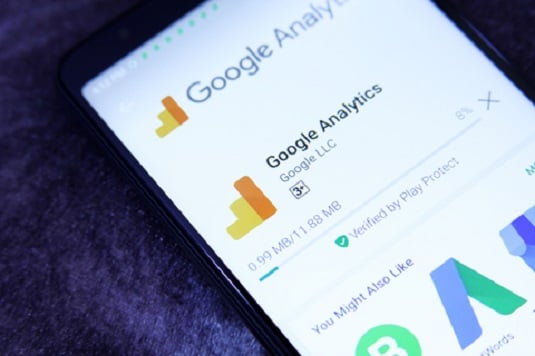

Related Posts
Subscribe to Our Blog
Subscribe to receive email notifications every time we publish new insights, news, and thought leadership to our blog.

Originally published here on NonProfit PRO.
How your nonprofit utilizes analytical data can have an astronomical impact on your organization’s online campaign success. Understanding data will allow your nonprofit to not just reach more volunteers and donors, but also create a strategy for long-term online success. Identifying and utilizing data tools does not have to put a financial burden on your organization. There are many free data tools, such as Google Analytics, that can provide key data points for your organization. Google Analytics provides a wealth of data that a nonprofit can use to reach more people and increase volunteer and donor rates. Here are five key metrics to analyze and how to use the data.
One of the most important metrics that Google Analytics provides is interactional data. A nonprofit can learn how visitors are engaging with their website and what pages they are visiting during their session. This information is key to identifying what pages are delivering the most value to your target audience. Understanding interactional data also allows nonprofits to create more content that interests their audience and optimize pages that are not performing. Finally, interactional data can allow a nonprofit to better understand what pages on their site are delivering the most conversions and ROI.
Another helpful metric for understanding how your nonprofit’s website is performing is the bounce rate. Bounce rate is a term that refers to what percentage of visitors viewed your site and exited without further action. Google Analytics can be used to see the bounce rate of the site as a whole or the rate for individual pages. Nonprofits can use bounce rate data to understand which pages of the website are driving visitors away and which pages are enticing traffic to take action and move through their funnel.
One metric that can be a double-edged sword is the average session duration. Google Analytics can be used to see how long visitors are spending on your website. Keeping visitors engaged on your nonprofit’s website is extremely important if you want to motivate them enough to take further action. However, if your web traffic is spending a long time on your site, it could also indicate your website is not well organized, and they are having issues navigating to the information they are looking for. Keep your organization’s goals in mind when looking at the average session duration. Is the goal to quickly convert visitors or to educate?
Understanding whom you are trying to reach with your organization’s online campaigns is highly important if you want to be successful. One practice that your nonprofit organization can take is to create personas for your donors and volunteers. This information will help you’re nonprofit be more effective. Google Analytics can help to measure whether your targeted personas are reaching your site. Analytics can provide the age of your visitors, their geographic location, and even their interests.
Google Analytics offers the ability to view your website sessions by traffic source. A few common traffic sources are organic, direct, referral, and social. This data can help your nonprofit understand where your website traffic is coming from and which traffic sources are the most valuable. The data can also help a nonprofit organization make strategic decisions on what campaigns to run and where. Finally, traffic source data can help your organization focus on traffic sources that need improvement through optimization.
Utilizing Google Analytics can be a huge win for your nonprofit organization if you are analyzing data that supports your goals. Access to key metrics that can help your nonprofit make strategic decisions is easier than ever, and all nonprofits should be data-driven. VolunteerHub can integrate with your Google Analytics data to provide even more insights to nonprofits about donors and volunteers.
Subscribe to receive email notifications every time we publish new insights, news, and thought leadership to our blog.